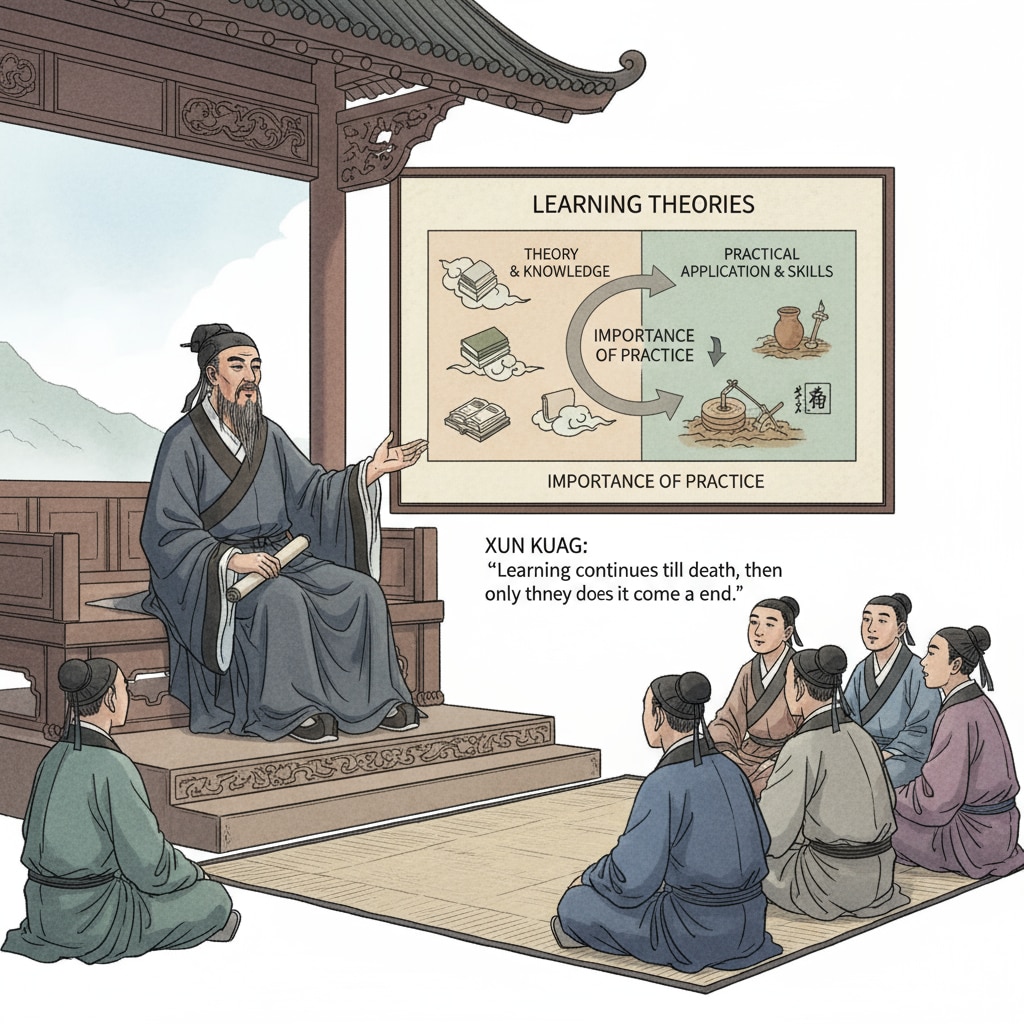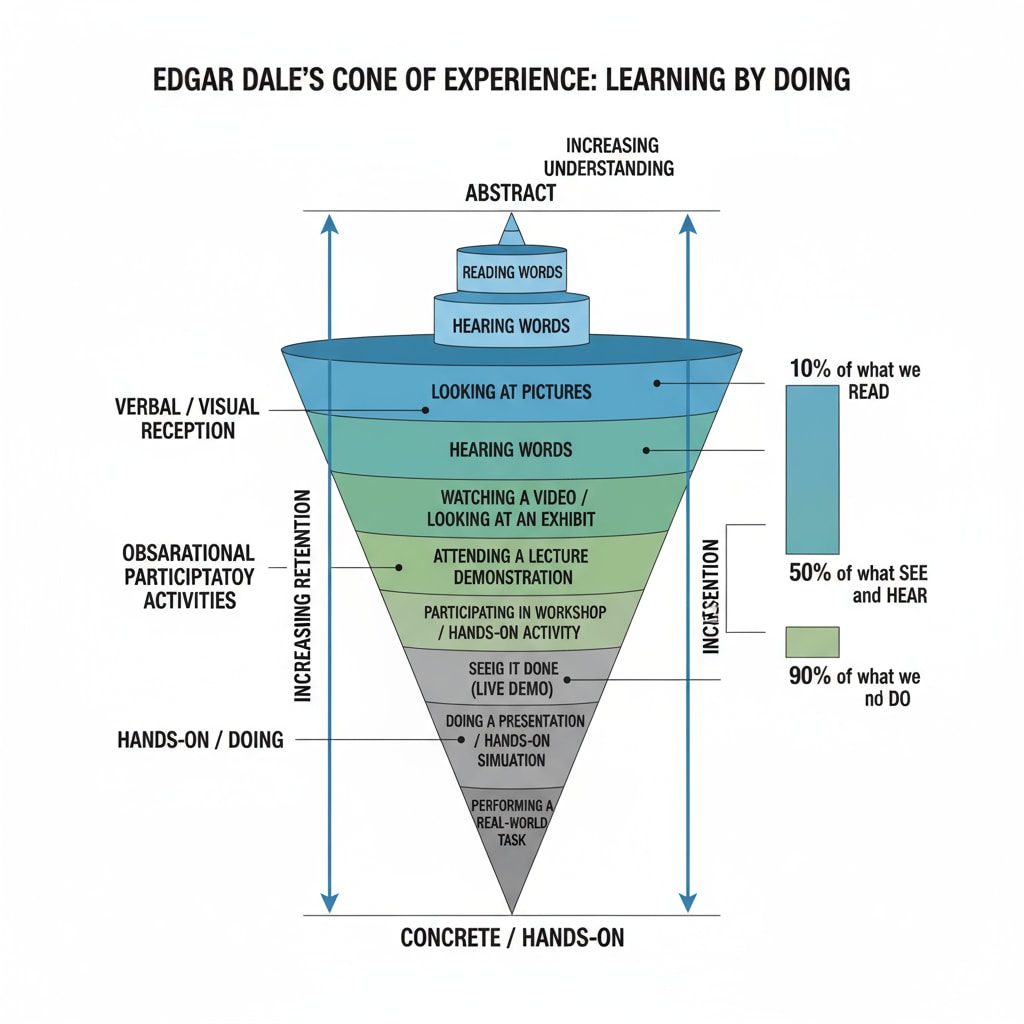Learning theories, the cone of experience, hands-on learning, and sensory engagement have long been crucial aspects in the field of education. Throughout history, scholars and educators have recognized the value of practical learning, which has been a consistent theme from ancient times to the modern era.
The Ancient Wisdom of Xun Kuang on Learning
Xun Kuang, an ancient Chinese philosopher, once said, “Not hearing is not as good as hearing, hearing is not as good as seeing, seeing is not as good as knowing, knowing is not as good as doing.” This profound statement emphasizes the hierarchy of learning. Merely hearing about knowledge is the most basic level. Seeing, which involves visual observation, provides a more concrete understanding. Knowing deepens this understanding through mental processing. However, it is only when we put knowledge into practice that we truly master it. For example, a student can read about how to plant a tree in a book (hearing), see a picture of a planted tree (seeing), and understand the principles of tree-planting (knowing). But it is not until they actually plant a tree themselves (doing) that they fully grasp the process, from preparing the soil to watering and nurturing the sapling. Xun Kuang on Wikipedia

The Modern “Cone of Experience” Model
In modern times, Edgar Dale’s “Cone of Experience” model further elaborates on the idea of effective learning. The cone is a visual representation of different levels of learning experiences. At the bottom of the cone are the most concrete and hands-on experiences, such as direct purposeful experiences and dramatized experiences. As we move up the cone, the experiences become more abstract, like listening to a lecture or reading. This model suggests that the more concrete and hands-on the learning experience, the more likely it is to be retained and understood. For instance, students who participate in a science experiment (a hands-on experience at the bottom of the cone) are more likely to remember the scientific principles involved than those who only read about the experiment in a textbook (a more abstract experience higher up the cone). Cone of Experience on Britannica

The concept of sensory engagement also plays a vital role in both Xun Kuang’s teachings and Dale’s model. When we engage multiple senses in the learning process, we create a more immersive and memorable experience. In a VR Egyptian exhibition, visitors can use their sight to explore ancient Egyptian architecture, their touch to interact with virtual artifacts, and their hearing to listen to historical narrations. This multi-sensory engagement makes the learning experience more profound compared to simply reading about ancient Egypt in a book.
Readability guidance: As seen, both ancient and modern ideas highlight the importance of hands-on learning. By understanding these concepts, educators can design more effective learning experiences that encourage students to actively engage in the learning process through practical means and multi-sensory interactions.


